Fuchu Prison Culture Festival 府中刑務所文化祭り 府中 東京
- Fuchu Prison and Tokyo Detention House
- Fuchu Prison Culture Festival
- Prison Adventure Tour
- Touring the Prison
- Prison Rules
- Festivities
- TV Documentary
- Access
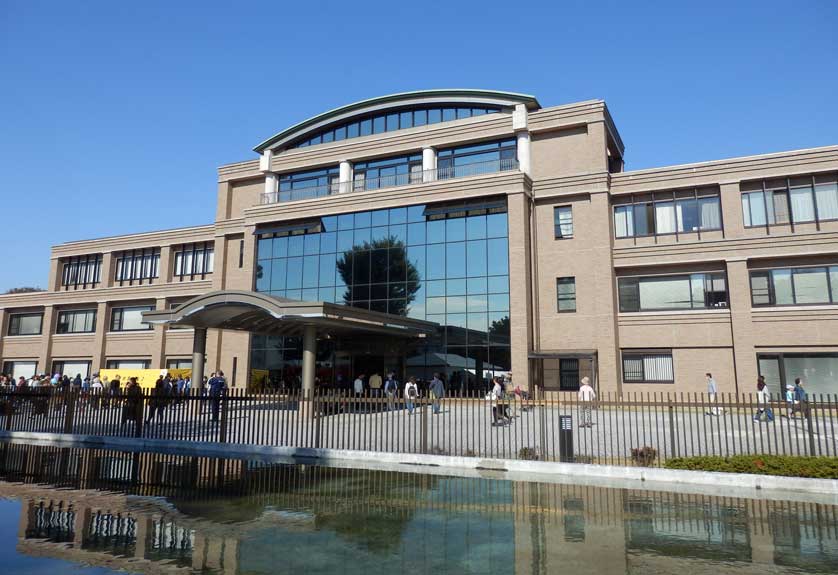
Fuchu Prison in Fuchu, western Tokyo is one of Japan’s largest prisons, holding more than 2,000 inmates. Almost all male foreigners serving sentences in Japan are held in Fuchu, usually numbering between 300 to 500.
Fuchu Prison is spread out over an area of 22.6 hectares and surrounded by a 1.8-kilometer long and 5.5-meter high wall.
Visiting the vicinity of the prison on any given day of the year, that wall is the only feature visible. A designated walkway leads along with it.
The prison architecture consists of long but low-rise barracks which are perfectly hidden by the wall.
It is not even possible to get a glimpse of the prison’s representative entrance building – it is located behind apartment blocks housing prison staff and thus off-limits.
You would need a very special reason to be allowed to access it. A pre-arranged meeting with an incarcerated family member would be such a reason.
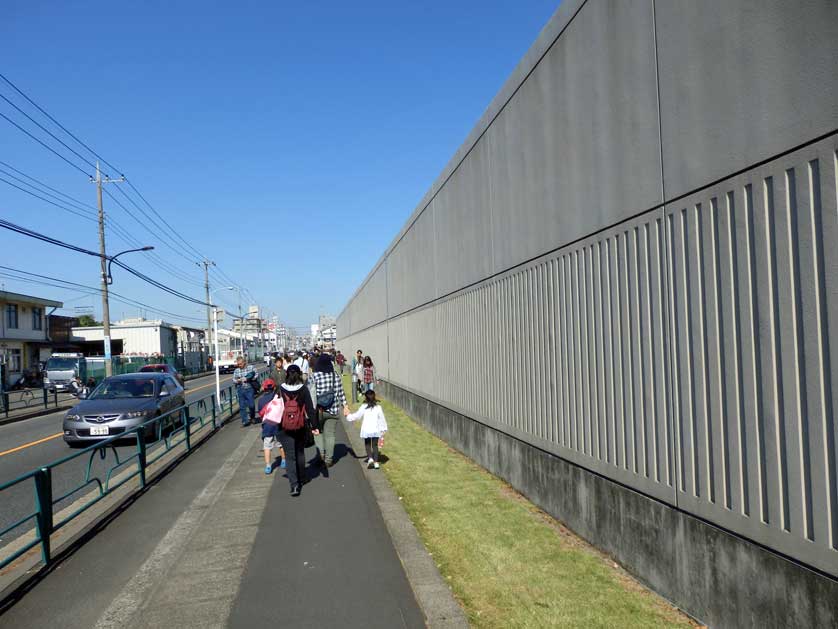
Fuchu Prison and the Tokyo Detention House
Tokyo has two major prisons: the Fuchu Prison and the Tokyo Detention House in Katsushika Ward.
Both carry on the legacy of Sugamo Prison in Ikebukuro. After Sugamo Prison was severely damaged in the Great Kanto Earthquake in 1923, the government decided to build a new prison in the western outskirts of Tokyo – Fuchu Prison. Fuchu Prison was opened in 1935.
Sugamo Prison itself was rebuilt and in service until 1971 when its facilities were moved to the newly erected Tokyo Detention House.
At that time, Sugamo Prison got completely razed. On its grounds, the Sunshine City 60 skyscraper was built, still one of the major landmarks of Ikebukuro.
While daily life for the incarcerated in the two facilities is largely regulated by the same rules, issued by the Ministry of Justice, architecturally, they are opposites.
The Tokyo Detention House is a huge building towering over the surrounding neighborhood, visible from far away.
Fuchu Prison, on the other hand, seems like an enigma behind a long wall.
Both prisons have their own festivals. Those are also quite opposite in their design. At the Tokyo Detention House, prison-made goods are sold right outside the actual prison building, performances are held on a small stage, “prison curry” and other meals supposedly served in the same style to the inmates are on offer.
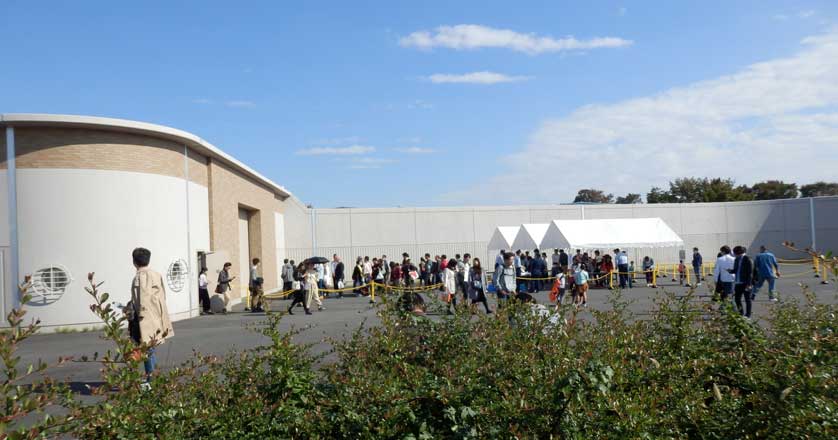
Access to the Detention House itself is however not possible. No information about life inside is provided at all.
Fuchu, however, offers access to many of its facilities without any hassle. You are able to see the inside, you are able to visit the barracks housing the workshops the prisoners labor in, you are able to see their bathing facilities, and you are able to read the signs regulating their daily existence.
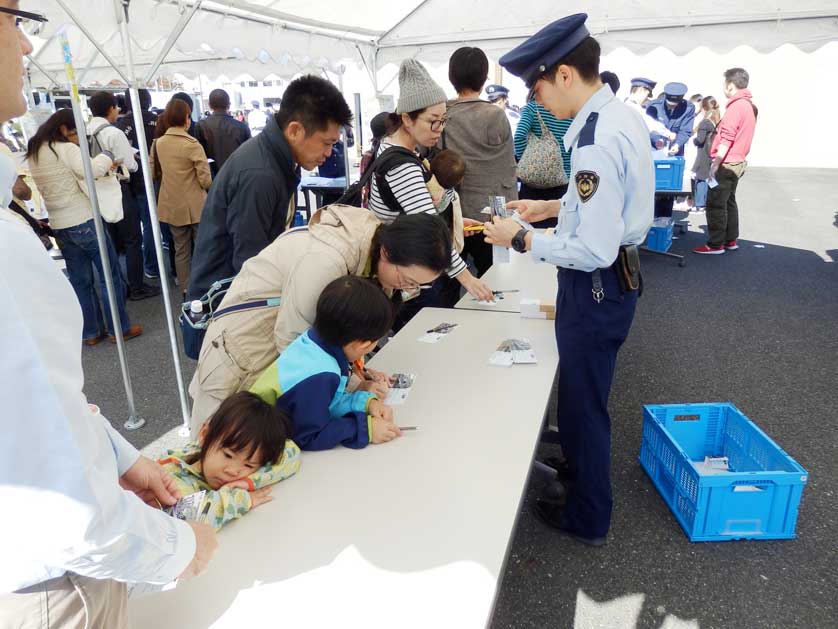
Fuchu Prison Culture Festival
The Fuchu Prison Festival is held annually on November 3rd, on Culture Day, a Japanese public holiday.
The gates to the prison staff apartment blocks are thrown wide open on that day, and a uniformed officer smilingly welcomes you.
You are able to approach the main prison entrance building freely and take all the photos you want.
The festival takes places right in front of it. The market stalls, the stage, and a sort of information room offer a few insights into life inside.
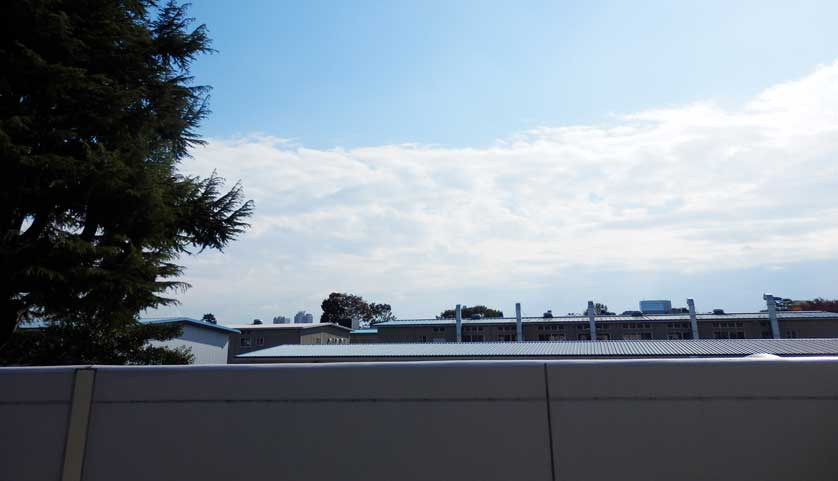
Prison Adventure Tour
The main attraction of the festival however is the “Prison Adventure Tour”. You are actually allowed to step inside the real prison.
Join the waiting lines in front of the truck gate on the western side of the prison complex, about a ten-minute walk from the site of the main festivities.
You need to write down your name and address on a portion of an admission ticket. That portion will be taken by the prison staff. You take the ticket and move on to a makeshift counter where you are asked to put your smartphone, your camera, and your cigarette lighter into a provided white plastic bag.
You will carry that plastic bag throughout the prison on your own, you can stow it away in your general luggage.
The implied meaning of it all is of course: Don’t take photos inside! Though nobody explicitly says so.
The approach does seem to work. Though rather psychological than physical, it does seem to prevent even the most camera-happy visitors from taking any illicit shots.
Searching google images, no such image could be found. Impressive. Japanese prison authorities know how to impose their rules – without even saying a word.
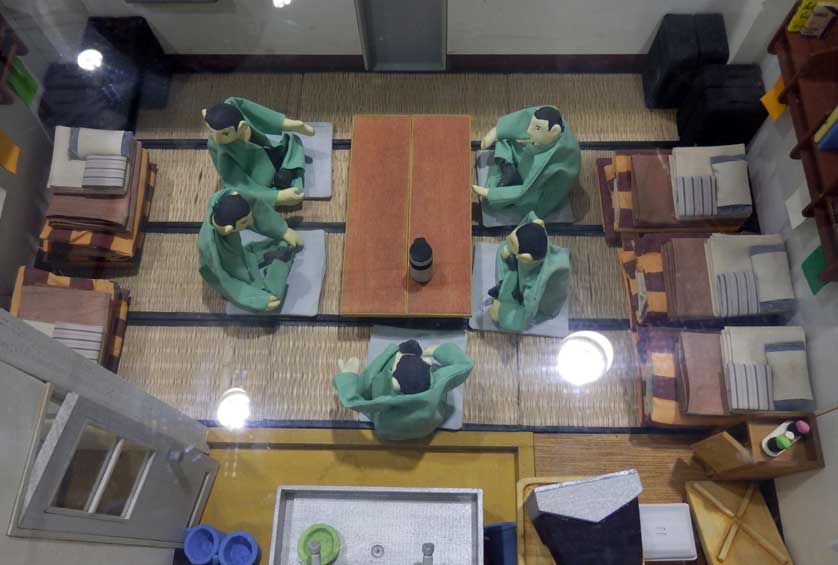
Touring the Prison
You proceed through the truck gate. Behind it is another gate. After that you are on the inside. Barracks are lined up, the grass between them is neatly trimmed, and you follow a prescribed route. Guards are stationed on every corner.
You enter the bathing facilities. Signs in more than a dozen languages warn the prisoners that the water close to the hot-water inflow into the baths is really, really hot and that they should stay away from the area.
The signs are spelled out in Japanese but also in Korean, Chinese (both traditional and simplified), Tagalog, English, Spanish, Portuguese, French, German, Russian, Arabic, Farsi and a few more. Thus indicating where sizable parts of the prison population originate from.
You move on to the laundry facilities in which the green garb worn by the inmates is cleaned. Carts with laundry ready to be thrown into the large automatic washers wait to be pushed. It feels as if the inmates in charge of the work had just stepped out minutes ago.
You proceed on to a paper workshop in which letter envelopes, notebooks, and other stationary goods are produced.
There, a large sign in English points out the TEN FUNDAMENTAL SAFETY RULES.
It was of course not possible to take a shot of the sign but the guard in charge grudgingly permitted me to jot the rules down.
Here they are:
- Always be healthy and cheerful.
- Cooperate with each other.
- Must obey the orders and instructions.
- Keep your clothes neat and tidy.
- Arrangement and neatness are most important.
- Check your machines and equipment.
- Do your work perfectly and orderly.
- Don’t neglect instructions and indications.
- Your neglect will be investigated.
- Don’t do anything on your own.
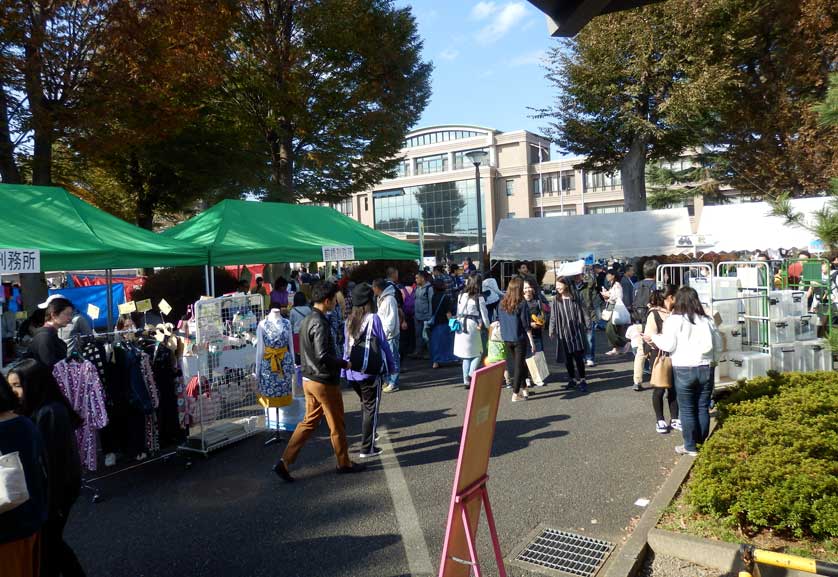
This being a workplace, rule # 10 means of course that prisoners are not supposed to illicitly produce anything to serve their own purposes.
Stepping outside of the paper workshop barrack, you walk by an automobile workshop. Both vintage and recent models can be spotted, in various stages of repair.
A guard asked about the cars said that outside companies contract the prison car workshop.
In general, the guards were polite but somewhat hesitant to give concrete answers to questions.
Surprisingly, in the middle of the prison complex is a very well tended small traditional Japanese garden, featuring a small pond.
No prisoners were not in sight at all, however. For them, it was lock-down day.
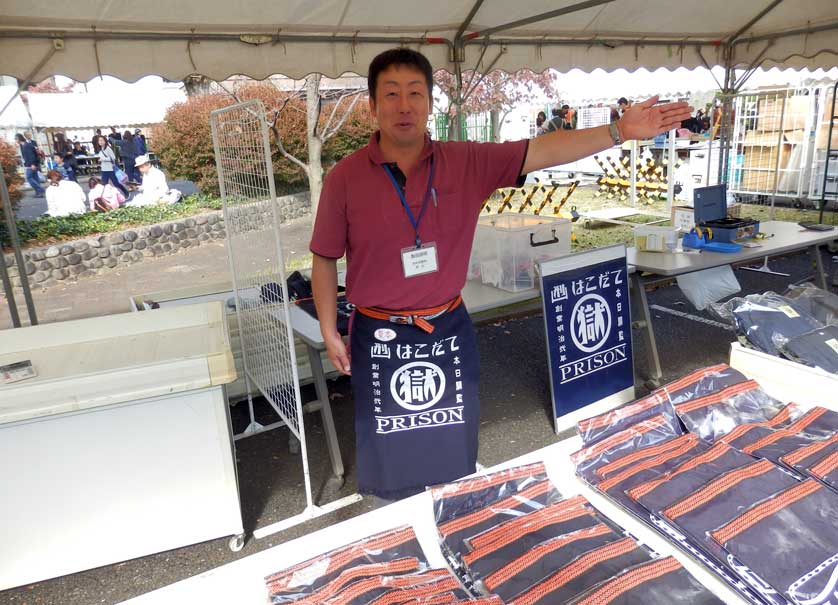
Prison Rules
In Japanese prisons, inmates must follow a very strict regime. Every minute of their day is regulated.
For every personal need they need to ask for permission. They must ask the guard in charge to get permission to go to the toilet during working hours, for example.
There is no loitering in the courtyard during off-hours, the permission to watch TV can be revoked for the smallest infractions.
Inmates even learn to walk in a certain style. A style that is hard to shake off after a lengthy stint in prison.
The strict regime in Japanese prisons means on the other hand that no prison gangs can form. Violence among inmates and violence against guards is close to nil.
The Japanese prison system is akin to a perfectly working, very effective machine.
Festivities at the Fuchu Prison Culture Festival
The festival itself features a well-attended market selling goods manufactured in correctional facilities all over Japan. The product range is wide, from stationary goods to shoes to furniture. All those sales are arranged by CAPIC, the company in charge of selling prison-made products in Japan.
Various musical acts perform on a makeshift stage. A wide array of Japanese festival food is on offer – from fried yakitori (fried chicken) sticks to sumo nabe (aka chankonabe a nutrient-rich soup that is part of the daily nutrition of sumo wrestlers) to a prison bento supposedly regularly on the menu for the prisoners inside.
It is a joyous festival and many families with children attend. November 3rd, Culture Day, has a long history of sunny weather.
TV Documentary on Fuchu Prison
If you want to get a deeper insight into the actual daily life behind bars in Fuchu Prison you might want to watch the documentary JAPAN FROM INSIDE – LE JAPON A DOUBLE TOUR, filmed by French TV in Fuchu Prison in 2000.
The TV crew got the rare permission to record actual prison life and the resulting documentary tells you all about the daily routines. It gives you the viewpoints of both the prison staff including the prison directors as well as the opinions of two French prisoners.
One of them speaks after his release, the other while still being incarcerated. The documentary is very informative and highly recommended.
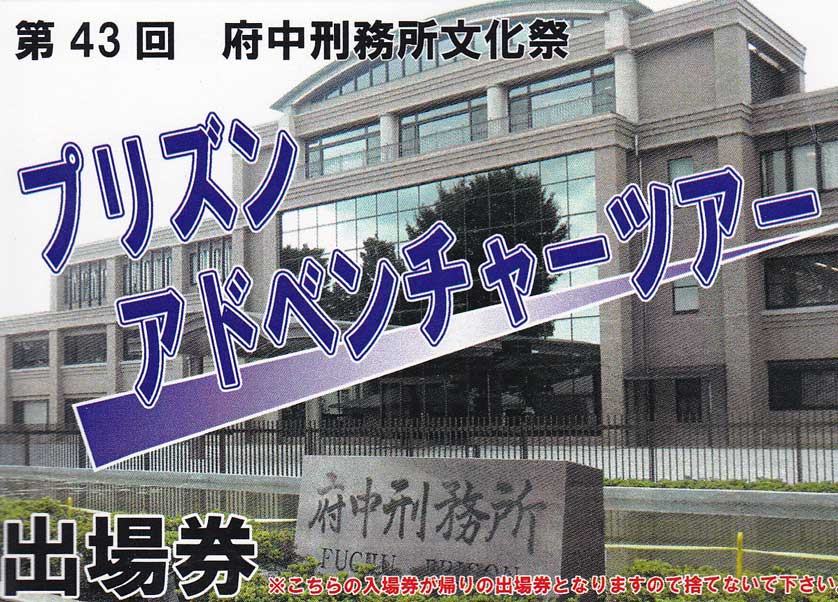
Access to Fuchu Prison
Take the JR Chuo Line from Shinjuku Station towards Tachikawa, change at Nishi Kokubunji Station to the JR Musashino Line in direction Fuchu Honmachi. Get off at Kita Fuchu Station (only one stop from Nishi Kokubunji).
Kita Fuchu Station has only one public exit, Fuchu Prison is in short walking distance.
Day of the festival: November 3rd, Culture Day (public holiday in Japan)
The festival starts at 10 am and lasts until 3 pm.
Last admission to the Prison Adventure Tour is 2 pm.
Admission to the Fuchu Prison Culture Festival and the Prison Adventure Tour is free.
The Ministry of Justice announces all Japanese prison festivals including the Fuchu Prison Festival on its website in Japanese www.moj.go.jp
Scroll down to the section on the bottom titled その他 お知らせ (other information).
Click the link to 府中刑務所文化祭 and you will find all relevant information.
Johannes Schonherr